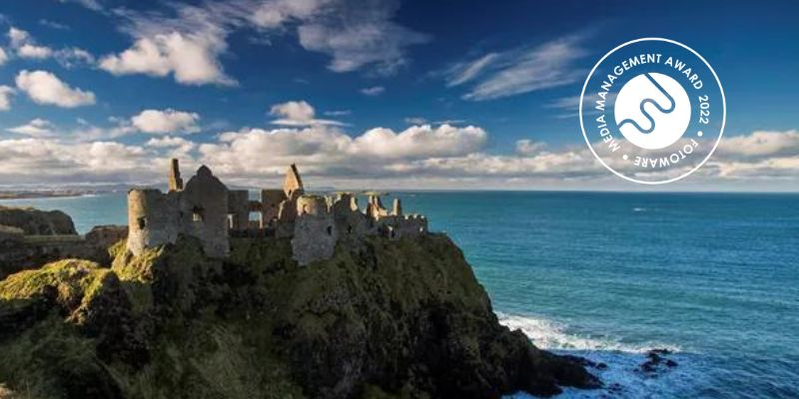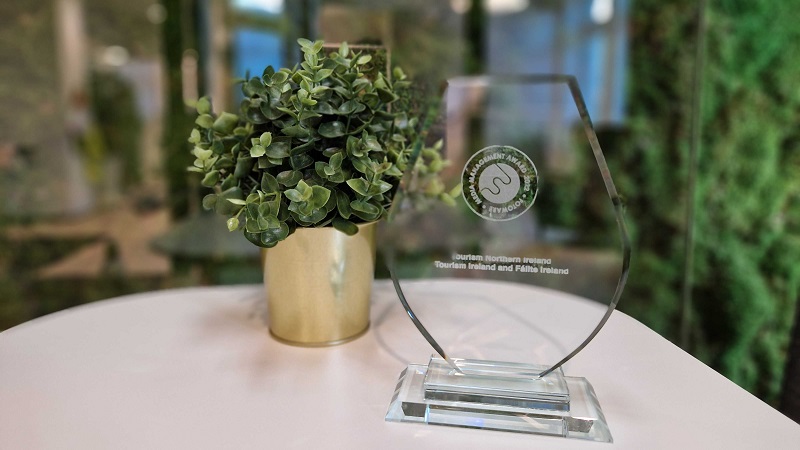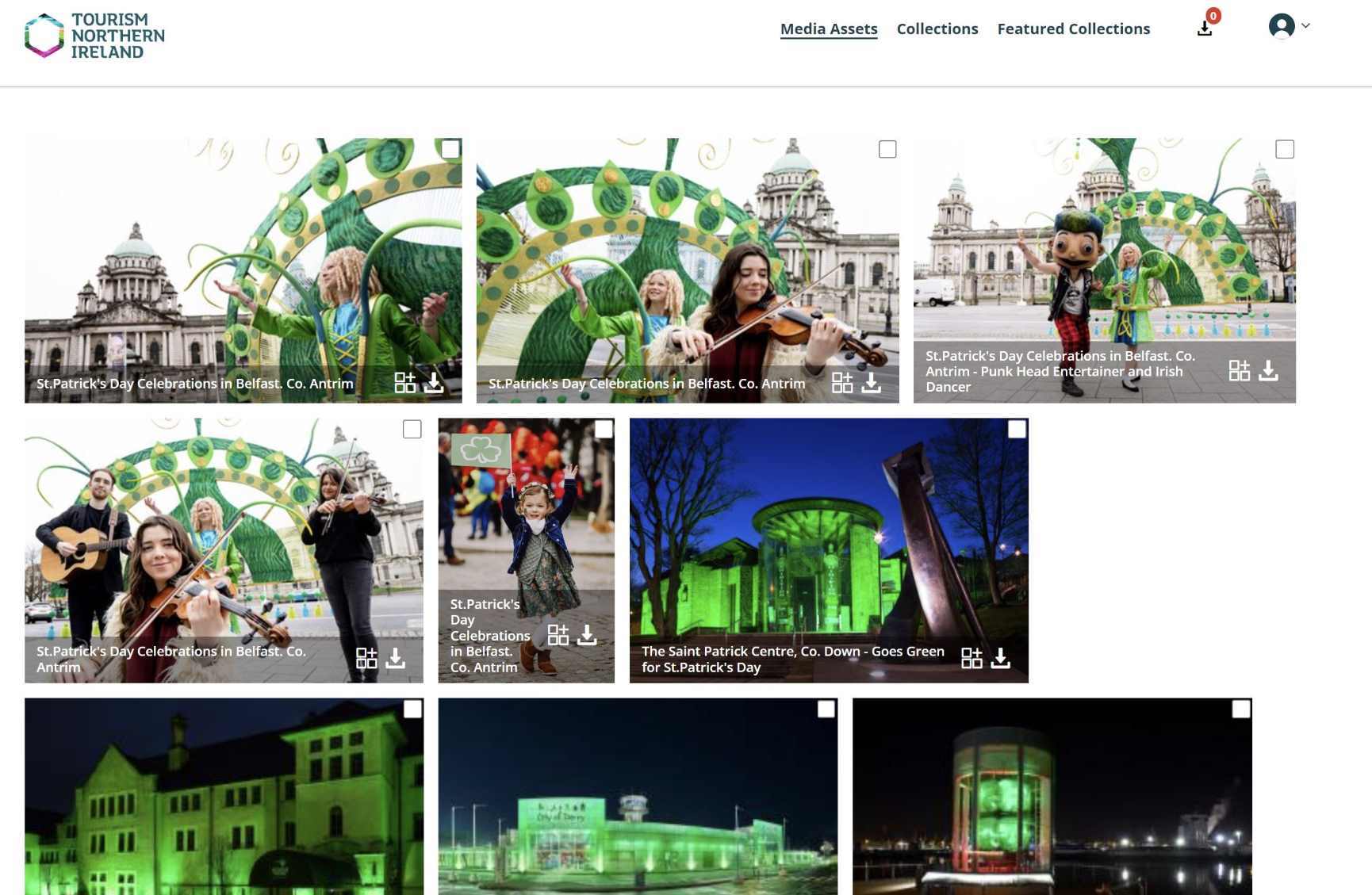
Header image: Tourism Northern Ireland
How 3 Tourism businesses in Ireland centralized DAM to drive collaboration
Tourism Northern Ireland, Failte Ireland and Tourism Ireland have joined forces to establish a collective Digital Asset Management system with the common goal of promoting Ireland as a unique leading holiday destination.
Together, they’re working to share, commission and re-distribute their tourism marketing content to showcase the island's immersive experiences and iconic landscapes across multiple channels.

The 3 tourism partners recently won the 1st place in the Media Management Award, showcasing how organizations can effectively manage and distribute marketing content while collaborating on joint initiatives.
We caught up with Lynette Conlon, Digital Content Management Executive at Tourism Northern Ireland, and Brenda Harris, Tri-agency DAM Project Manager at Failte Ireland, to hear more about what challenges they faced while implementing a shared DAM solution and how they managed to overcome them. They also offered some useful tips for other organizations looking to adopt a collaborative DAM solution.
Please tell us a bit about your tri-agency organization and your roles.
As three separate tourism organizations, we have a unique story to tell. But at the same time, we’re one collective tri-agency in DAM terms. The three organizations have joined forces to implement a successful collaborative, cloud-based DAM to promote the island of Ireland as a unique leading holiday destination.
All three agencies have dedicated DAM Managers whose roles vary day-day, but whose main DAM role is to ensure the smooth running of the platform - enabling a seamless end-user experience through content searches and visibility. The role also entails: providing support across our organizations, tourism industry, media and beyond; ensuring on-going development of the system functionality to meet current and future needs of users; aligning with all three organizations strategically; and pursuing continuous education and training on the platform.
What challenges did you have before implementing a shared DAM solution?
We were trying to find a way to manage and distribute our marketing content. Previously, we had separate image bank platforms which over time failed to meet future organizational needs, including:- Non-aligned taxonomies: At the early stages of this project, we came together and formed one aligned structured hierarchical taxonomy to meet organizational needs.
- Silo vs one source of truth: Previously, all three organizations were storing their assets in ‘silo areas,’ which was not an efficient business process. By creating a tri-agency and implementing a 2nd-gen DAM, they were able to create “one source of truth” that was lacking in the 1st-gen DAMs.
- Digital Rights Management: DAM smartly manages DRM, enabling the tri-agency team to align asset relations and ensure track and trace.
- Efficient content commissioning: As a tri-agency organization, we ‘e able to collaborate more efficiently by identifying content gaps and working together to capture content.

What kind of digital assets are stored in the current DAM solution, and who are the primary users?
Our DAM system covers a broad range of assets types and formats to meet customers' needs. We currently house branded collateral, imagery, video toolkits, music files and digital rights documents.Our user base is also quite diverse, ranging from internal staff and creative agencies to external users on the island of Ireland and around the globe. Statistically, a large proportion of our user types include those from the Tourism, Advertising, Design, Media and Travel Trade industries.
What are the most critical DAM features that have enabled your success?
-
Metadata: Currency of any DAM System is metadata, to quote if I may ‘John Horodskyi’ recently published book ‘Metadata does Matter’ helps us to understand how metadata gives structure and meaning to our housed assets and can only acquire their value with Metadata, so it's really important to understand metadata is such a crucial element to ensuring asset searchability in a DAM system.
-
Workflow Alignment: Aligned workflows be it manual or automated are all part of our DAM success, ensuring consistency, alignment and transparency has helped to promote a seamless collaboration and an openness and understanding of the tri-agency goals to develop a customer focused DAM system.
-
One source of truth: Our Cloud based DAM 2.0 has enabled the term ‘One Single Source of Truth’ it’s the single source of collaboration and distribution and has enabled the move away from Silo sharing to One Central repository accessible to all.
-
3rd Party Upload: This is a tool where users can upload their own images and videos to the DAM to help promote tourism on the island of Ireland. This has been very successful having received over 11,000 assets since launch 1.5 years ago. The Tool reduces costs by generating media assets which have no associated curation or commission costs. The media uploaded is varied and diverse which would be hard to capture on commissions.
— "This platform has not only transformed the ways we collaborate with each other, but this strong partnership has significantly enhanced working relations with our stakeholders, the wider tourism industry, the media and our extensive network of users around the globe. " -
Can you please share some tips for others who are planning for a shared DAM with other organizations?
- Plan Ahead: Take time to begin conversations with your potential tri-agency DAM partners ahead of time so each of you can begin to understand your goals, objectives and requirements and start the process of alignment.
- Perform an Asset Audit: It’s imperative that you ‘Know your assets’ - How many assets are there? Can you locate them? Do you know the usage rights? These are some of the questions you need to ask ahead of time. This will benefit you when you procure and migrate to a new DAM system.
- Undertake market consultations: Test your market for DAM providers who will work with multiple organizations sharing same system, there are many ways in which you can begin those conversations. For example, DAM events/conferences such as Henry Stewart where you can meet DAM providers in the one space and begin to get an idea of whom can potentially meet your business requirements.
- Consider recruiting an external consultant to advise on tender process on best practices on collaborative working.
Want to learn more?
Talk to one of our experts to discover how we can streamline your organization's content workflows.